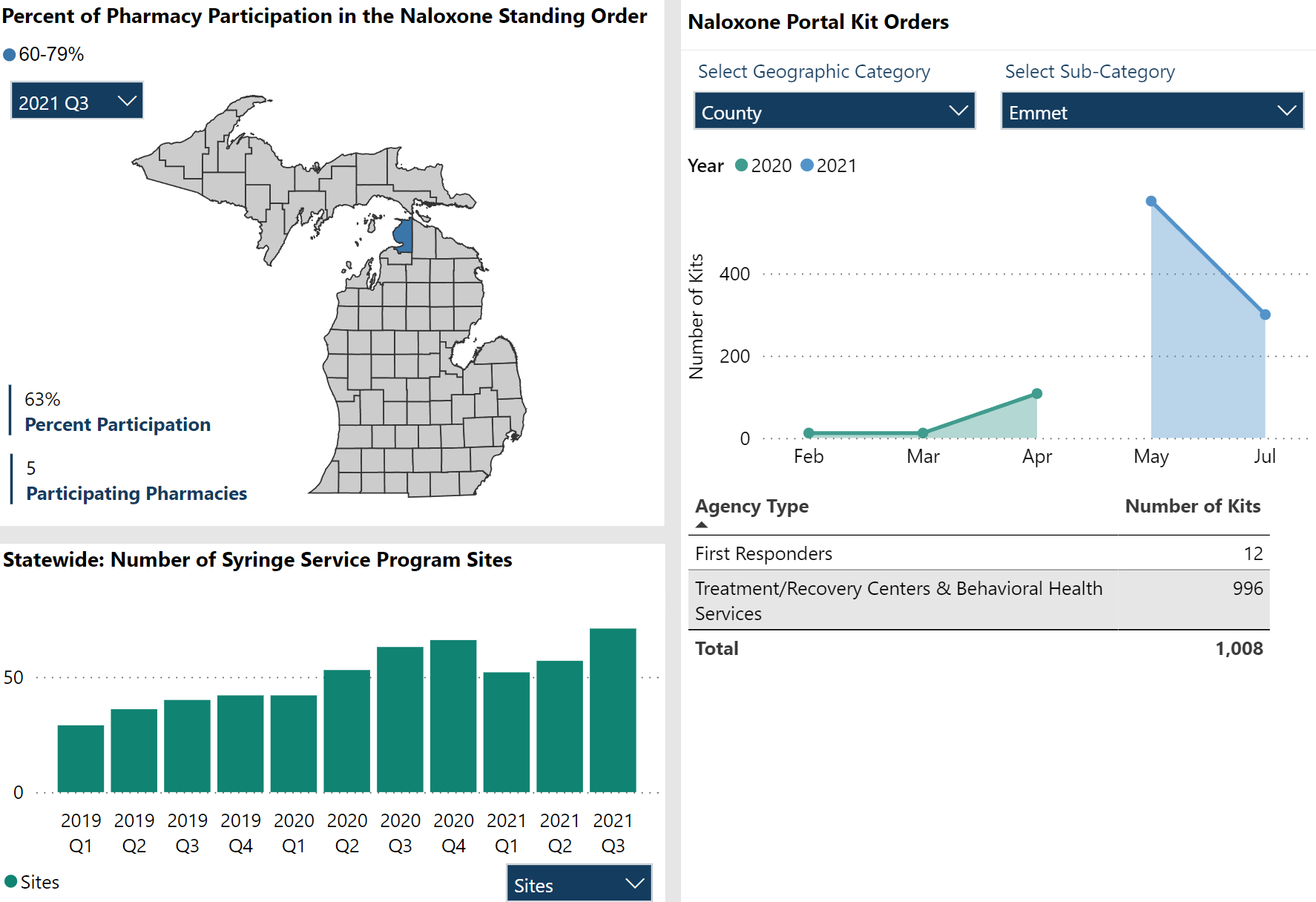
How many pharmacies participate in the naloxone standing order in my county?
Why is this Question Important?
The availability of naloxone, an opioid antagonist that rapidly reverses the effects of an opioid medication, is a first line of defense in countering the incidence of opioid-related overdose deaths.
In states that adopt a naloxone access law, there is a 9-11% decrease in the number of opioid-related deaths, according to the National Bureau of Economic Research.
In Michigan, a statewide standing order from State Health Officer allows a trained pharmacist to dispense naloxone to anyone at risk or in a position to help someone at risk without a prescription.
Academic Detailer Tips
Academic detailers are well positioned to highlight the many uses and variety of mechanisms to access naloxone. In addition to members of the public obtaining naloxone from a local pharmacy, clinicians can prescribe naloxone to patients at increased risk for accidental overdose.
To reduce the risk of overdose deaths, clinicians should strongly consider prescribing naloxone, and providing education about its use for the following patients who are at risk of opioid overdose.
Michigan Overdose Data to Action Dashboard
About this Resource
The Michigan Department of Health and Human Services (MDHHS) MODA team is funded by the Centers for Disease Control and Prevention (CDC) Overdose Data to Action (OD2A) grant to bring surveillance and prevention efforts together to decrease rates of drug misuse, substance use disorder, fatal and nonfatal overdoses, and drug use-related health risks.
MODA is working to strengthen the capacity of communities to prevent drug overdoses to promote the exchange of data to support effective prevention programs in communities throughout Michigan.
Tutorial
Example Output
Technical Note: The Percent of Pharmacies Participating in the Naloxone Standing Order indicator represents the percent of licensed pharmacies in Michigan that are registered to dispense naloxone, a medication used to reverse opioid overdose, under the standing order policy issued by the Michigan Department of Health and Human Services (MDHHS). Data is sourced from the Environmental Health Surveillance Section, MDHHS.





